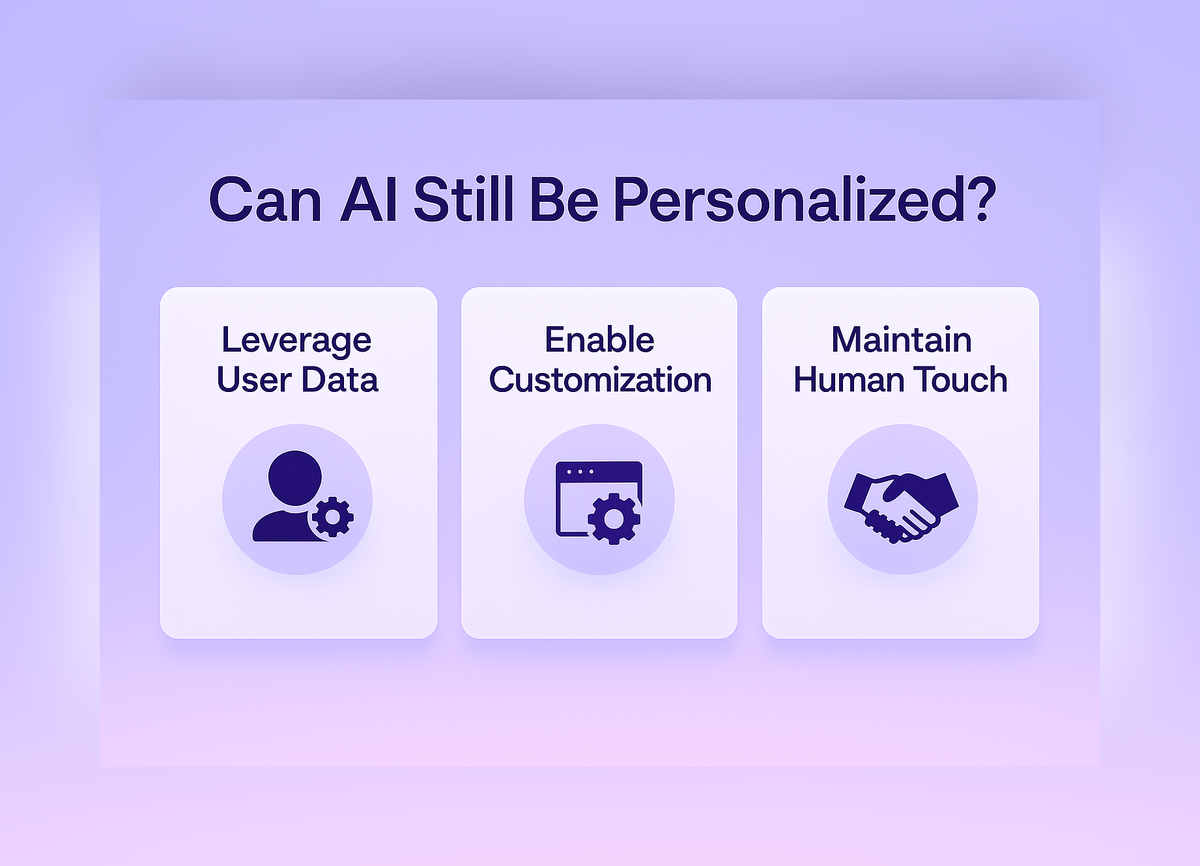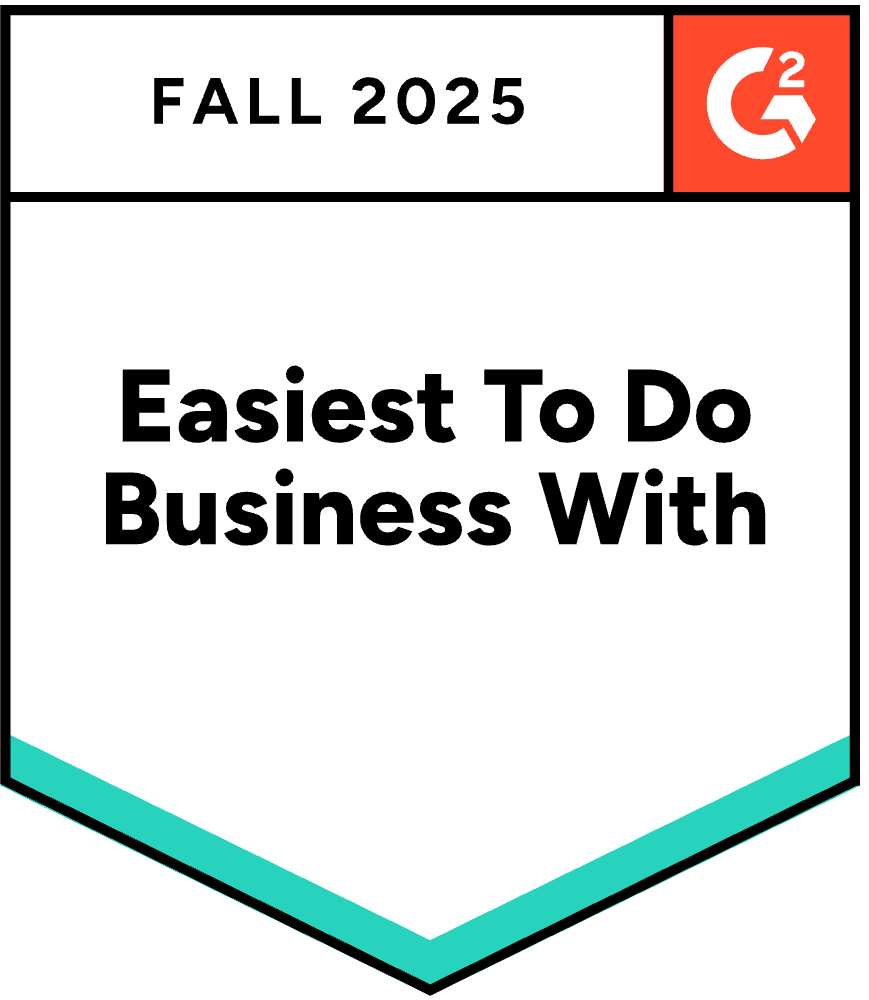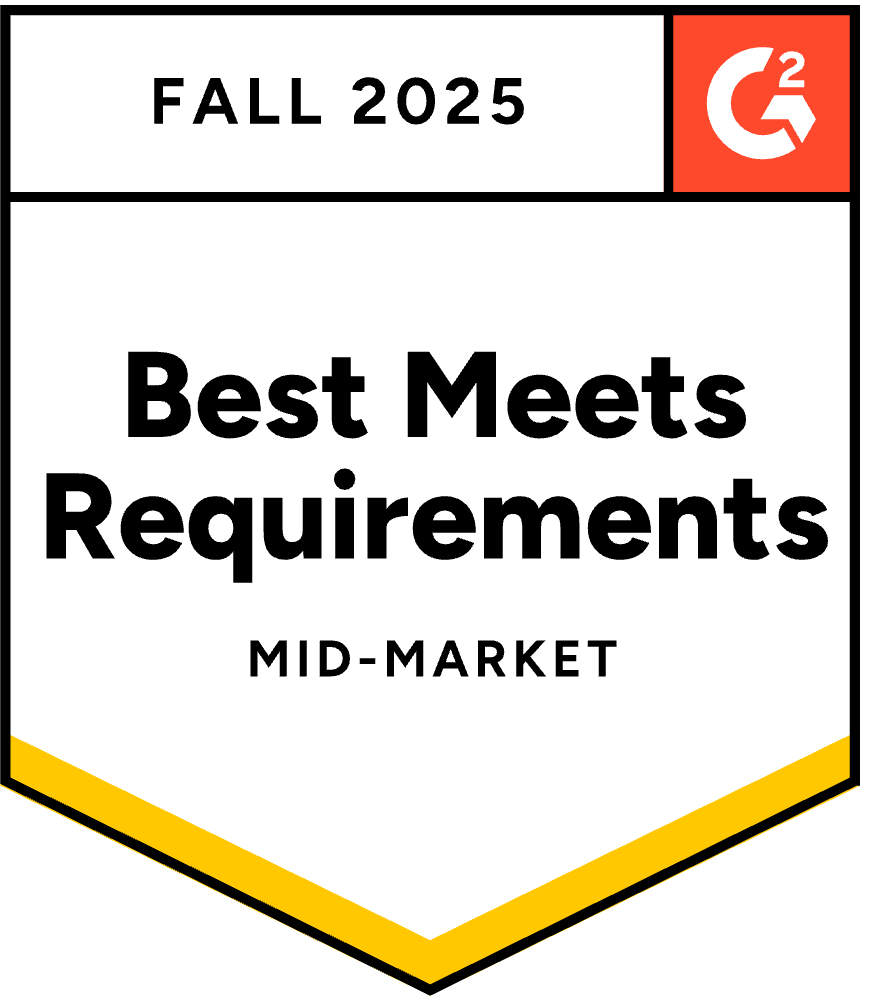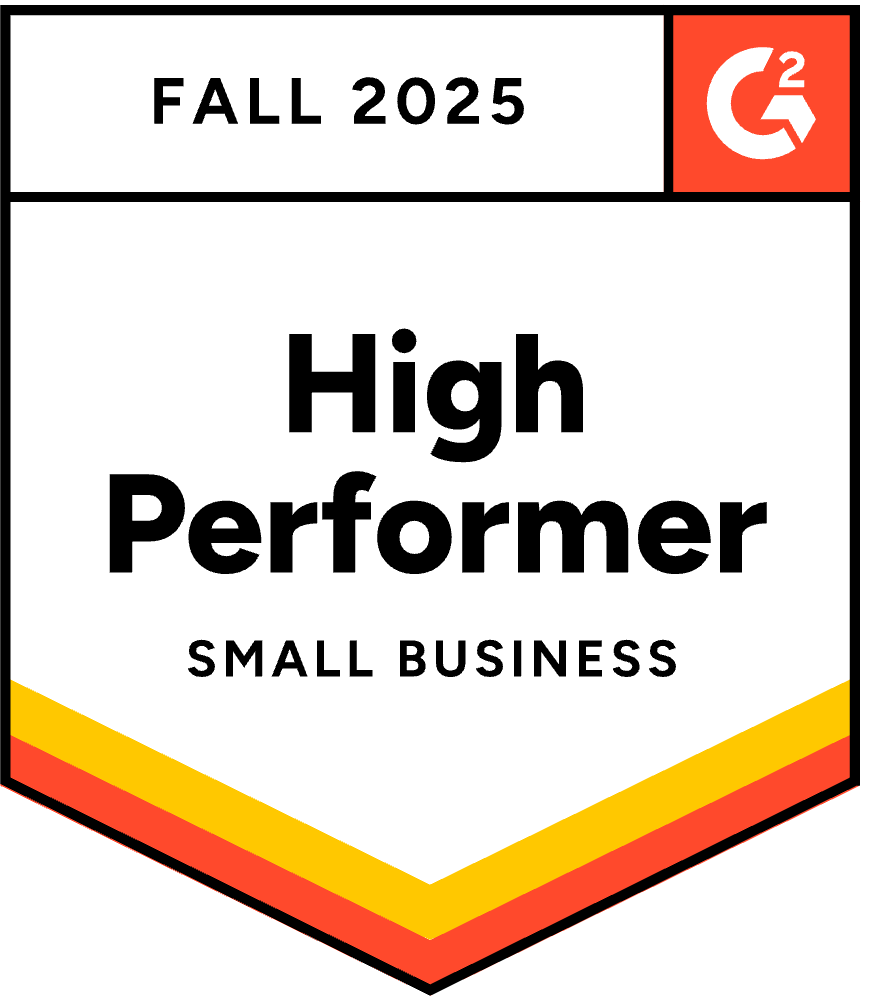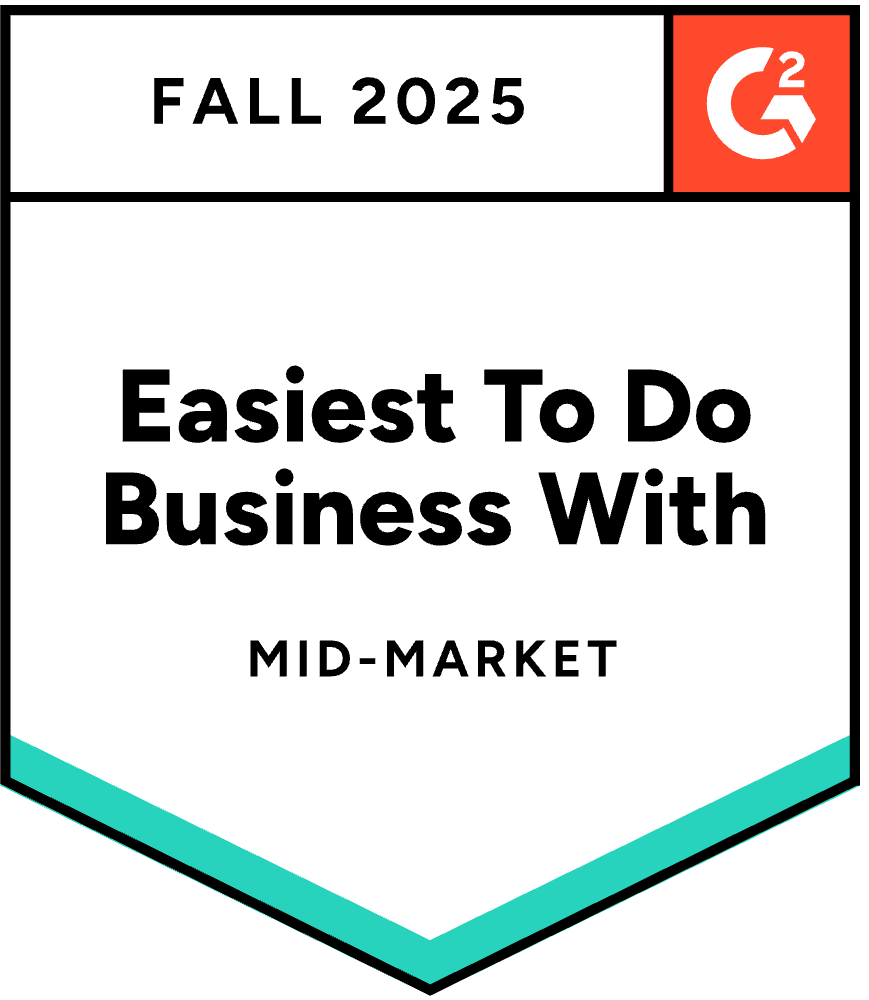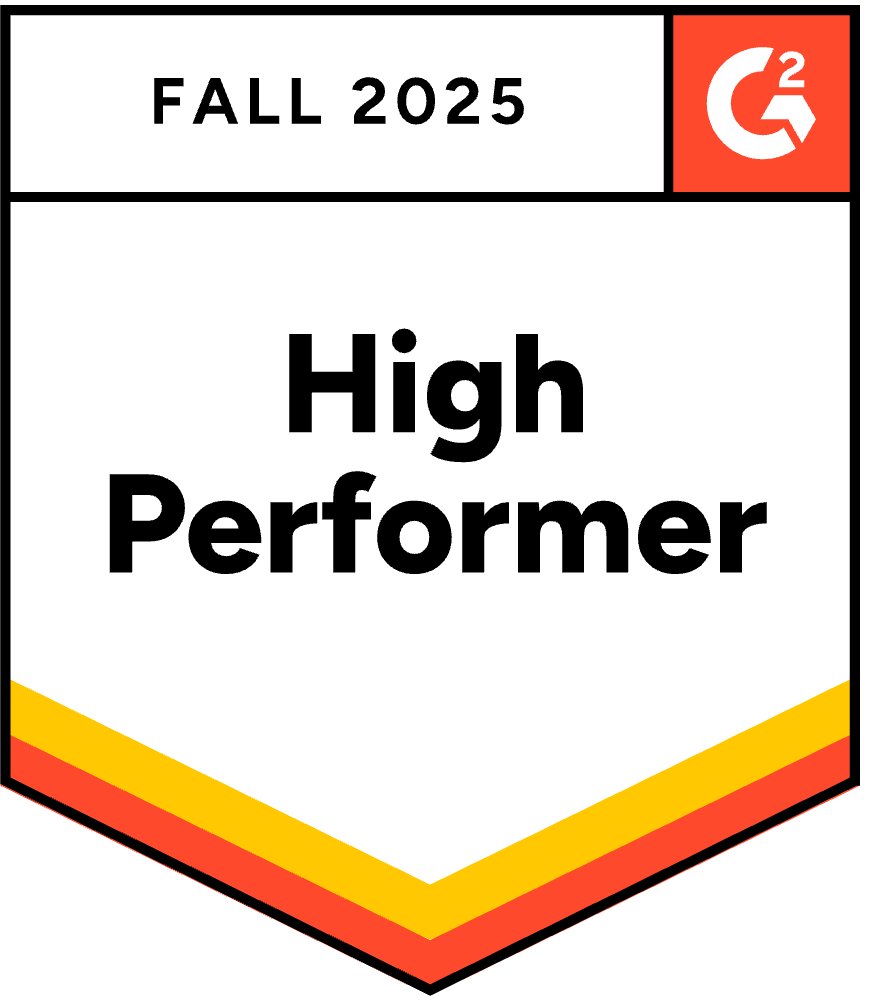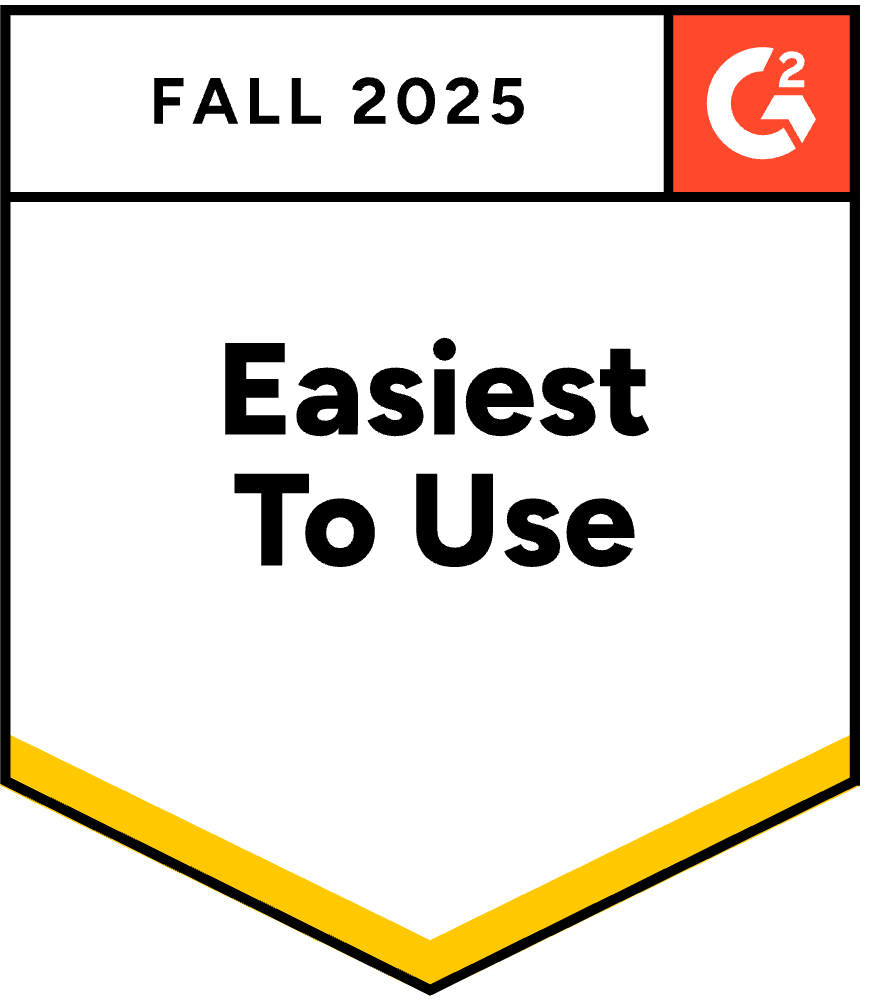RFP Software Pricing: The Ultimate 2025 Guide
October 1, 2025
By
Evie Secilmis
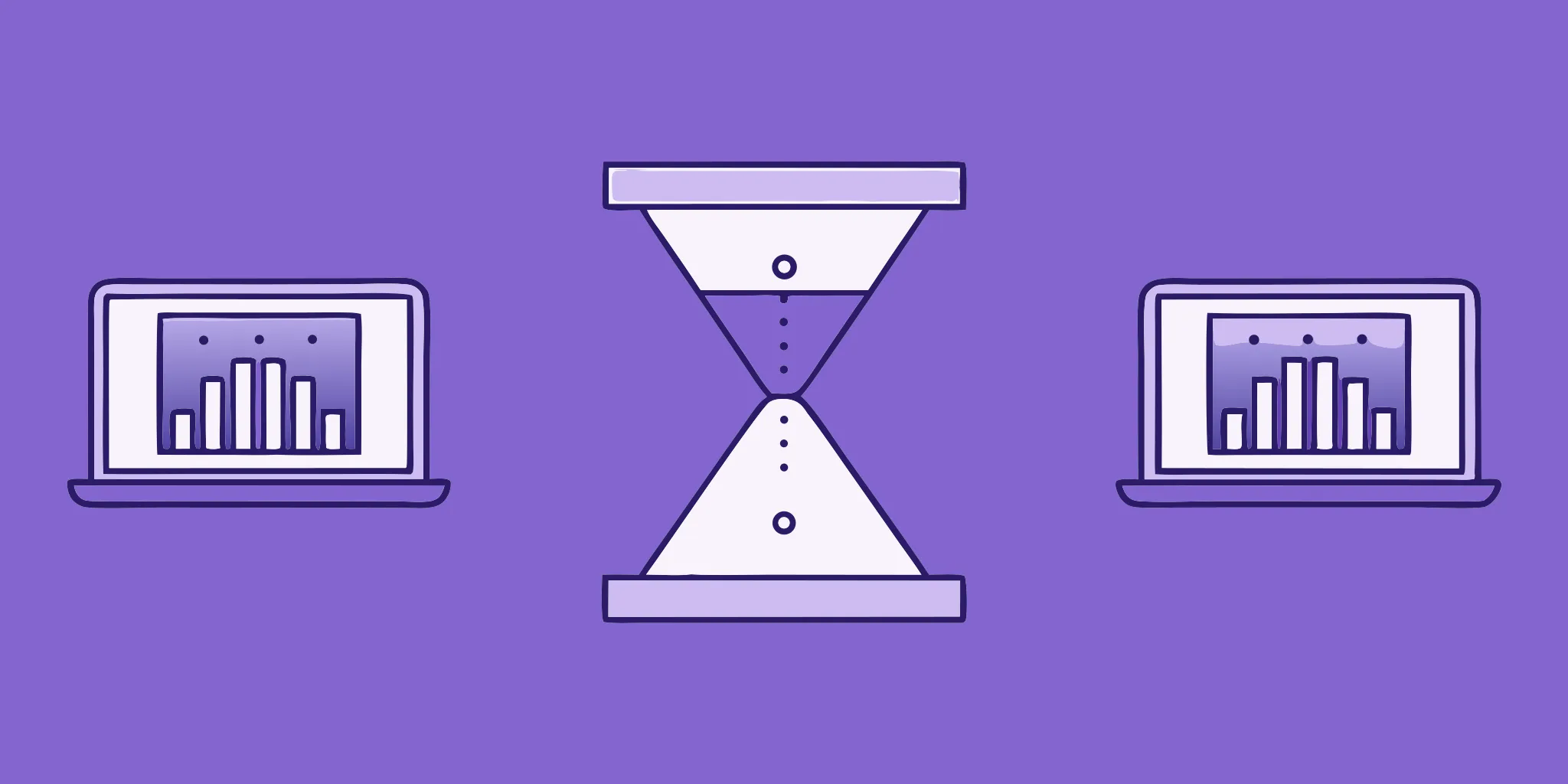
That monthly fee on the proposal software website? It's tempting to focus on it, but it's rarely the full picture. The smartest teams know the real conversation about RFP software pricing is about return on investment, not just the upfront cost. A cheap tool that’s clunky and slows you down is no bargain. The right platform saves your team hundreds of hours and directly improves your win rate, paying for itself many times over. This article will help you look beyond the price tag to calculate the true value of an AI-powered deal desk, ensuring you choose a solution that’s a powerful asset for your sales cycle.
Key Takeaways
- Budget for more than just the subscription fee: The true cost of RFP software includes implementation, training, and potential add-ons for extra users or integrations, so ask about these upfront to avoid surprises.
- Match the features to your team's biggest pain points: Identify your core needs first—whether it's AI-powered drafting or seamless CRM integration—to find a solution that solves real problems instead of just adding another subscription.
- Focus on value over the lowest price: The right tool pays for itself by saving your team hundreds of hours and improving your win rate, so evaluate how a platform will impact your bottom line, not just your budget.
How Does RFP Software Pricing Work?
Figuring out the cost of RFP software can feel like trying to hit a moving target. You’ll find that pricing isn’t always listed upfront, and the models can vary wildly from one provider to the next. That’s because the price often reflects the solution's depth, including its AI power, integration capabilities, and the level of support you receive. The goal is to find a plan that not only fits your budget but also delivers a clear return on investment by saving your team hundreds of hours and helping you win more deals.
Before you even look at a price tag, it’s helpful to understand the core factors that influence cost. These typically include the number of users who need access, the volume of RFPs you handle, and the complexity of your documents. Advanced features like a sophisticated AI response engine, deep CRM integrations, and robust security protocols also play a significant role. The most effective AI deal desk solutions are priced to scale with your business, ensuring you have the tools you need as your team and deal volume grow. As you explore your options, you’ll generally encounter three main pricing structures: per-user models, flat-rate subscriptions, and custom enterprise plans. Let's break down what each one means for your team.
Why Invest? The Data Behind RFP Software Adoption
Let's be real: adding another subscription to your budget can feel like a big ask. But the hidden costs of managing RFPs manually—the late nights, the frantic searches for answers, the risk of submitting an error-filled proposal—are far greater. The data shows that teams using RFP software see a dramatic reduction in the time it takes to complete proposals, often cutting down processes from weeks to just a few hours or days. This isn't just about working faster; it's about giving your team the breathing room to focus on strategy and quality. The right tool pays for itself by saving hundreds of hours and helping you work better with your team, which directly impacts your win rate and your bottom line.
Software for Responders vs. Software for Issuers
As you explore the market, you'll notice that RFP software generally falls into two camps. Some platforms are built for issuers—the companies sending out RFPs to find vendors. Their goal is to organize submissions and compare vendors. Then there's software for responders, like us at HeyIris. We build tools for the teams on the front lines who are managing incoming requests and writing winning proposals. This distinction is critical because a responder-focused platform is designed specifically to streamline your sales cycle, centralize your best content, and help you submit higher-quality responses faster. Make sure you're looking at solutions built for your side of the table.
Paying Per User vs. Paying Per Response
The per-user pricing model is one of the most common structures you'll see, especially for small to mid-sized teams. It’s straightforward: you pay a monthly or annual fee for each person on your team who needs access to the software. Prices can range from around $25 to over $75 per user per month, with different tiers offering more advanced features like in-depth analytics and automation. This model is great for predictability when your team size is stable.
A less common alternative is the per-response model, where you pay based on the number of RFPs you complete. This can be a good fit for companies that only respond to a handful of proposals each year. However, for most sales teams, the per-user model provides the freedom to work on unlimited proposals without worrying about hitting a cap.
Predictable Costs with Flat-Rate Plans
For teams that value budget predictability, flat-rate pricing is a fantastic option. With this model, you pay a single, fixed fee—usually on an annual basis—for access to the software. This often includes a generous feature set and, in some cases, unlimited user seats. Knowing your exact software cost for the year makes financial planning much simpler and encourages wider adoption across your organization, since you don't have to worry about the price increasing every time a new team member needs access.
This approach is ideal for growing companies or larger teams where multiple stakeholders, from sales and marketing to legal and IT, contribute to proposals. It removes the friction of managing individual licenses and ensures everyone who needs to collaborate can do so. This model truly supports the collaborative benefits of a centralized RFP platform.
The Value of Unlimited User Seats
When you're comparing software, it’s easy to get caught up in the per-user price, but a limited number of seats can quickly become a bottleneck. Think about it: a winning proposal often requires input from subject matter experts across your entire company—from legal and IT to product and marketing. If you have to constantly juggle licenses or ask people to share logins, you’re slowing down the process and creating unnecessary friction. Unlimited user seats remove that barrier entirely, encouraging the kind of seamless collaboration that leads to stronger, more accurate responses.
This approach isn’t just about convenience; it’s about future-proofing your investment. As your team grows, you won’t be penalized with escalating costs for adding new members. Everyone who needs to contribute can have access, making the platform a true central hub for your proposal knowledge. This model simplifies your budget with predictable, flat-rate costs and ensures the tool can scale alongside your business. It shifts the focus from counting heads to what really matters: empowering your entire team to contribute their best work and win more deals.
Tailored Pricing for Enterprise Teams
When your organization has complex needs that don't fit into a standard package, a custom enterprise plan is the way to go. This is the standard for large, global companies or those in highly regulated industries that require specific security protocols, custom integrations, or dedicated support. Instead of a public price list, you’ll work directly with the provider’s sales team to build a solution tailored to your exact requirements.
The final price is based on a variety of factors, including the number of responses you manage annually, your specific workflow needs, and any advanced security or compliance features you require. While it requires a conversation to get a quote, this bespoke approach ensures you’re only paying for what you need and that the platform is perfectly aligned with your business goals, as seen in various customer success stories.
What Do You Actually Get for Your Money?
RFP software isn't a one-size-fits-all solution, and its pricing reflects that. Most vendors structure their offerings in tiers, so you only pay for the features you actually need. As you move up in price, you’ll find more powerful automation, deeper integrations, and more robust security. Understanding what’s typically included at each level helps you match your team’s needs with the right investment. Let’s break down what you can generally expect to find, from the essential starter packs to the all-inclusive enterprise platforms.
What's Included in a Basic Plan?
Think of a basic plan as your entry point into streamlining the RFP process. These plans are designed for individuals or small teams who are moving away from manual methods for the first time. You can expect core features that make a real difference, like a central content library to store and reuse your best answers and templates to get responses started quickly. Basic reporting tools are also common, giving you a simple overview of your activities. While these plans might have limits on storage or the number of users, they provide the fundamental tools you need to organize your content and respond more consistently.
Leveling Up: Mid-Tier Features
This is where you start to see features that focus on team efficiency and collaboration. Mid-tier plans are built for growing businesses that need to handle a higher volume of proposals without sacrificing quality. You’ll find more advanced automation for routine tasks and custom templates that let you tailor responses to specific clients. This tier often includes crucial integrations with other business systems, like your CRM, which helps keep data consistent across platforms. Enhanced analytics also come into play, offering deeper insights into your win rates and response performance so you can refine your strategy over time.
Going All-In: Enterprise Features
Enterprise plans are the complete package, designed for large organizations where security, scalability, and powerful automation are non-negotiable. At this level, you get everything from the lower tiers plus advanced features like top-tier security protocols and dedicated customer support. The biggest differentiator is often the AI. Leading platforms can automate up to 80% of the response process, using artificial intelligence to draft high-quality answers and ensure brand messaging stays consistent. With full integration capabilities and unlimited usage, these plans are built to become a core part of your sales infrastructure, handling complex RFPs, DDQs, and security questionnaires with ease.
Let's Talk Numbers: Real RFP Software Costs
Alright, let's talk numbers. When you start looking at RFP software, you'll notice that pricing is all over the map. The final cost really depends on what your team needs—from the number of users to the specific features that will make your life easier. Some companies lay out their pricing clearly, while others, especially those with more complex solutions, will ask you to schedule a demo to get a custom quote. This is pretty standard in the software world. To give you a clearer picture, let's break down the typical pricing tiers you'll encounter.
Getting Started: Entry-Level Tools ($10-30/user)
If your team is just dipping its toes into the world of proposal management, an entry-level tool is a great place to start. These platforms typically run between $10 and $30 per user each month. For that price, you can expect the essentials: a central content library to store your best answers and some basic reporting features. This tier is perfect for small businesses or teams that handle a handful of RFPs and need a more organized process than juggling spreadsheets and Word documents. While they get the job done, they often lack the advanced automation and deep integrations you'll need as your company grows.
Example: Per-User Monthly Plans
The per-user pricing model is one of the most common structures you'll encounter, particularly for small to mid-sized teams. This straightforward approach involves paying a monthly or annual fee for each team member who requires access to the software. Prices typically range from around $25 to over $75 per user per month, with various tiers offering advanced features such as in-depth analytics and automation. This model is particularly beneficial for teams with stable sizes, as it provides predictability in budgeting while ensuring that all users have access to the necessary tools to enhance their proposal processes.
For teams that are just starting out or have limited needs, entry-level tools can be a great introduction to proposal management. These platforms generally cost between $10 and $30 per user each month, providing essential features like a central content library and basic reporting tools. However, as teams grow and their needs become more complex, they may find that investing in higher-tier per-user plans pays off by offering more robust automation and integration capabilities.
For Growing Teams: Mid-Market Platforms ($30-75/user)
For teams that are starting to feel the growing pains of a manual process, mid-market platforms offer a significant step up. Priced between $30 and $75 per user per month, these solutions are built for efficiency. Here, you’ll find more advanced features like automated workflows that assign tasks to the right people, custom proposal templates, and more detailed reporting. This tier is ideal for growing organizations that need to respond to proposals faster and with greater consistency. You can start to build a truly streamlined deal desk solution that supports your sales cycle instead of slowing it down.
Example: Flat-Rate Project-Based Plans
Instead of paying for each seat, some platforms offer a flat-rate plan, which is a game-changer for teams that need predictable costs. With this model, you pay one fixed annual fee for access to the software, often including a generous feature set and sometimes even unlimited user seats. This makes financial planning much simpler and encourages everyone in the organization to use the tool. It’s ideal for growing companies where multiple stakeholders from sales, marketing, and legal need to contribute to proposals. You can add new team members without worrying about the price going up, which removes friction and supports the collaborative benefits of a centralized platform.
For Large Organizations: Enterprise Solutions ($75+/user)
When you’re a large organization with complex security needs and a high volume of proposals, you need a powerhouse tool. Enterprise-grade solutions typically start at $75 per user per month and often go up from there, usually with custom pricing. These platforms offer the whole package: top-tier security protocols, full integrations with your entire tech stack, and dedicated support. This is where you’ll find powerful AI that can generate entire first drafts for you. For a solution this robust, you’ll almost always need to request a quote to get pricing that’s tailored to your company’s specific requirements.
Example: Enterprise-Level Annual Subscriptions
For large organizations, the pricing conversation shifts from a simple per-user fee to a comprehensive annual subscription. Enterprise-grade solutions typically start at $75 per user per month and often go up from there, usually with custom pricing tailored to your specific needs. This investment gets you more than just software; it includes top-tier security protocols, full integrations with your entire tech stack, and dedicated support to ensure a smooth rollout. The right tool pays for itself by saving your team hundreds of hours and improving your win rate, making it a critical asset for organizations that handle a high volume of proposals. For a solution this robust, you’ll almost always need to request a quote to get pricing that’s tailored to your company’s specific requirements, ensuring you get a platform that truly supports your sales goals.
Beyond the Sticker Price: Common Hidden Costs
The price you see on a vendor’s website is rarely the final number you’ll see on the invoice. When you’re evaluating RFP software, it’s easy to focus on the monthly subscription fee, but the total cost of ownership often includes expenses that aren’t advertised upfront. Being aware of these potential add-ons from the start helps you create a realistic budget and avoid surprises down the road.
Think of it like buying a house—the mortgage is the main expense, but you also have to account for property taxes, insurance, and maintenance. Similarly, the true cost of software includes everything it takes to get it running smoothly and integrated into your team’s workflow. From initial setup and training to ongoing support and scaling, several factors can impact your overall investment. By asking the right questions and looking beyond the sticker price, you can find a solution that fits your budget not just today, but for years to come.
The Cost of Getting Your Team Onboard
Getting new software up and running is more involved than just creating a login. Implementation can include configuring the platform to match your workflow, setting up user permissions, and establishing integrations. Some vendors offer this as part of the package, while others charge a one-time setup fee. Beyond the technical setup, your team needs to learn how to use the tool effectively. Comprehensive training sessions or dedicated onboarding support can sometimes come at an additional cost. Be sure to clarify what level of implementation support is included and budget for any necessary training to ensure your team can hit the ground running.
The Price of Adding More Teammates
Many RFP software platforms use a per-user pricing model, which seems straightforward at first. However, costs can climb quickly as your team grows. Before committing, think about who will need access. Will it just be your core proposal team, or will subject matter experts, sales reps, and leadership also need seats? Some plans have a minimum user requirement, while others charge a premium for adding new members. Always project your team’s future growth and understand how the pricing model will scale with you. This prevents a tool that’s affordable today from becoming a budget-breaker tomorrow.
Connecting Your Tools: API & Integration Fees
Your RFP software doesn’t operate in a vacuum. To be truly effective, it needs to connect with the other tools you use every day, like your CRM, cloud storage, and communication platforms. While many vendors advertise a long list of integrations, access to them isn't always included in the base price. You might need to upgrade to a higher-tier plan or pay separate fees for API access to build custom connections. A seamless workflow is critical, so confirm which integrations are essential for your team and verify whether they come with any extra charges.
The Cost of Moving Your Content Library
Your team’s existing content—past proposals, Q&A pairs, and templates—is an incredibly valuable asset. Moving all of that information into a new system is a critical step, but it’s often an overlooked expense. Some vendors offer tools to help you import data, but the process can be time-consuming and may require technical help. In some cases, you might need to pay for a dedicated data migration service to ensure everything is transferred correctly and organized properly within the new platform. Underestimating the effort involved in data migration can delay your team’s adoption and reduce your immediate ROI.
Is Ongoing Support an Extra Cost?
When you run into an issue, you need to know that help is available. Most software subscriptions include a standard level of customer support, but the response times and channels (email, chat, phone) can vary. If you need priority support, a dedicated account manager, or 24/7 assistance, you’ll likely need to pay for a premium support package. It’s also wise to ask about any potential maintenance fees or charges for future updates. Understanding the vendor’s support structure and what’s included in your service-level agreement (SLA) ensures you get the help you need without unexpected bills.
How to Calculate Your Total Cost of Ownership
The price tag on RFP software is just the starting point. To truly understand the investment, you need to look beyond the monthly subscription and consider how the software will fit into your team’s specific workflow and business goals. A cheap tool that slows you down is no bargain, and an expensive one with features you never use is just a waste of budget. Calculating the true cost means matching the price to the value you’ll receive. By looking at your response volume, team size, essential features, and growth plans, you can build a clear picture of the total cost of ownership and find a solution that’s a genuine asset to your sales process.
How Many RFPs Do You Actually Answer?
First, take a hard look at how many proposals your team handles. Are you responding to a few high-value RFPs a month, or are you churning out dozens of responses every week? If your volume is high, a per-response pricing model could get expensive quickly, making a flat-rate plan more predictable. On the other hand, a higher volume also means you’ll see a greater return on efficiency. Shaving even 10% off the time it takes to complete each proposal adds up significantly when you’re managing a heavy workload. Understanding your volume helps you weigh the cost against the potential time savings and choose a plan that makes financial sense.
How Many People Will Use the Software?
The number of people who will need access to the software is a major cost driver, especially with per-user pricing. Count everyone who touches the proposal process—from sales reps and proposal managers to subject matter experts and legal reviewers. It’s also smart to think about who might need access in the future. If you plan to grow your sales team in the next year, a plan with restrictive user limits could lead to unexpected costs. Understanding the hidden costs of software like additional user licenses is key for accurate financial planning and prevents you from having to renegotiate your contract six months down the line.
What Are Your Team's Must-Have Features?
Before you even look at pricing pages, make a list of your non-negotiables. What features are absolutely essential for your team to succeed? This could be a robust AI-powered content library, seamless integration with your CRM, or specific security certifications like SOC 2. By defining your must-haves, you can quickly filter out tools that don’t meet your core needs. This prevents you from overpaying for an enterprise-level platform full of features you’ll never touch, or worse, choosing a budget tool that lacks the critical functionality your team relies on. A clear feature analysis ensures you invest in a solution that solves your actual problems.
Think Ahead: Planning for Future Growth
The software you choose today should be able to support your business tomorrow. Think about where you see your company in the next one to three years. Do you plan on expanding your sales team, entering new markets, or increasing the number of proposals you submit? A scalable solution will grow with you, preventing the massive headache and expense of migrating to a new platform when you outgrow your current one. Ask vendors about their higher-tier plans and the process for upgrading. Choosing a partner with a clear path for scalability ensures your RFP software can keep up with your success.
What's the Potential Return on Investment?
Ultimately, the conversation shouldn't just be about cost—it should be about return on investment. A powerful RFP tool does more than just store content; it accelerates your sales cycle and improves the quality of your proposals, which directly impacts your win rate. Calculate the value of the time your team will save and how many more deals you could win with a more efficient process. A platform that costs a bit more but helps you close one extra deal could pay for itself many times over. Looking at real-world case studies can help you see the tangible business impact and justify the investment in a tool that delivers a clear and compelling ROI.
Measuring Efficiency Gains with AI
The most significant value of modern RFP software comes from its AI engine, and this is where you'll see the biggest efficiency gains. The best platforms can automate up to 80% of the initial drafting process, pulling accurate, up-to-date answers from your content library in seconds. Think about what that means for your team: hundreds of hours saved are suddenly available for personalizing proposals, refining strategy, and building client relationships. This shift from tedious administrative work to high-value strategic tasks doesn't just make your team happier; it directly contributes to a higher win rate. When you evaluate a tool, measure its AI capabilities not just by speed, but by the quality and accuracy of the drafts it produces. That's the true test of a platform that delivers a strong return on investment.
How to Set a Smart Budget for RFP Software
Creating a budget for new software is about more than just finding the lowest price tag. It’s about making a strategic investment that will pay off in saved time, higher quality proposals, and more wins. When you approach budgeting with a clear plan, you can confidently choose a tool that fits your needs today and supports your growth tomorrow. Think of it as finding a partner for your proposal process, not just buying a product. Here’s how to set your team up for success.
Separate Your Needs from Your Wants
Choosing the right AI-powered RFP tool can feel overwhelming, but it really comes down to what your team needs. Before you even look at pricing pages, sit down with your team and create two lists: "must-haves" and "nice-to-haves." Your must-haves are the core functions you can't live without, like a central content library or AI-powered response generation. Nice-to-haves might include advanced analytics or specific integrations. This simple exercise helps you focus your search and ensures you don't overpay for bells and whistles you won't use. Identifying the essential features for your workflow is the first step to making a smart financial decision.
Leave Room in Your Budget to Scale
The software you choose today should be able to keep up with your team's success in the future. As your organization grows, will your RFP software be able to adapt? Consider your long-term goals. Do you plan to expand your sales team, respond to more complex RFPs, or enter new markets? The right tool doesn't just make responses faster—it transforms how your team works, enabling collaboration and accuracy at any scale. Look for a platform that offers flexible plans, allowing you to add users or upgrade features without a major overhaul. This foresight prevents you from having to switch vendors just as your team is hitting its stride.
Get Quotes and Compare Your Options
It’s easy to get fixated on the initial cost, but the cheapest option is rarely the best value. A low-cost tool that’s difficult to use or lacks critical features will cost you more in the long run through lost time and missed opportunities. Instead of just comparing prices, evaluate the overall value each vendor offers. Read reviews, ask for customer references, and review case studies to see real-world results. A vendor that invests in customer support, provides thorough training, and consistently improves its product is a true partner in your success. This long-term perspective is key to maximizing your return on investment.
Yes, You Can (and Should) Negotiate the Price
Don't be afraid to discuss pricing with vendors. Most sales teams, especially for enterprise-level software, have some flexibility. Once you have a quote, you have a starting point for a conversation. You can often find savings by asking about discounts for annual prepayment versus monthly billing or by signing a multi-year contract. If you're purchasing multiple products or a large number of user licenses, ask about bundling options. Being prepared to negotiate contract terms can lead to better pricing and a deal that truly fits your budget, helping you avoid financial surprises down the road.
Beyond Software: How to Price Your Services in an RFP
While the right software can assemble your proposal, the pricing section is often where the deal is truly won or lost. Nailing your pricing strategy is a delicate balance. You need to be competitive enough to get noticed, profitable enough to sustain your business, and clear enough that the client understands exactly what they’re paying for. It’s not just about putting a number on a page; it’s about communicating the value you bring to the table. Let's explore some of the most common pricing models and how you can use data to build a strategy that helps you win.
Common RFP Pricing Models
There’s no single right way to price your services, and the model you choose can significantly impact how a potential client perceives your proposal. The best approach depends on the specifics of the project, the clarity of the scope, and your relationship with the buyer. Some models offer the client budget predictability, while others provide flexibility for projects that are likely to evolve. Understanding the pros and cons of each allows you to select the structure that best aligns with the project's requirements and your own business needs, setting clear expectations from the start.
Fixed-Price Model
The fixed-price model is as straightforward as it sounds: you propose one single price for the entire project. This approach is ideal when the project scope is crystal clear and you have a high degree of confidence in your cost estimates. Clients often appreciate this model because it makes budgeting simple and predictable—they know exactly what they’ll pay, with no surprises. However, the risk falls squarely on your shoulders. If the project takes longer than anticipated or requires more resources, that extra cost comes out of your profit margin. It’s crucial to have a tightly defined scope of work to make this model successful.
Time and Materials Model
In a time and materials model, you bill the client for the actual hours your team works, plus the cost of any materials used. This approach offers maximum flexibility, making it a great fit for complex or long-term projects where the scope might change over time. It ensures you’re compensated for all the work you do, protecting your profitability. The main drawback is the lack of budget predictability for the client, which can cause some hesitation. To build trust with this model, it’s important to provide transparent reporting and regular updates, and perhaps set a "not to exceed" cap to give the client some peace of mind.
Tiered and Unit-Based Pricing
Tiered pricing gives clients options by presenting several service packages at different price points, like a "Basic," "Standard," and "Premium" offering. This strategy works well because it caters to different budgets and needs, and it can subtly encourage clients to choose a higher-priced option with more value. Similarly, unit-based pricing breaks the cost down into smaller, measurable pieces—like a price per user, per hour, or per item. This is common for subscriptions and ongoing services, as it makes the cost easy to understand and scale. Both models offer a clear, transparent way to present your value to the client.
Using Data to Inform Your Pricing Strategy
Your pricing should never be a wild guess. The most successful proposals are backed by a data-informed strategy that considers both internal and external factors. Start by analyzing your past projects. What did it actually cost you to deliver similar services? A centralized platform where you store all your previous proposals makes this analysis much easier. Next, conduct market research to understand what competitors are charging. This doesn’t mean you have to be the cheapest, but it helps you position your offer competitively. Finally, make sure your price covers all your costs and includes a healthy profit margin. Your price communicates your value, so be sure it reflects the quality and expertise you bring to the table.
Choosing the Right RFP Software for Your Budget
Once you have a handle on pricing, the final piece of the puzzle is finding the software that fits your team like a glove. It’s not just about the price tag; it’s about the value it brings to your specific workflow. The flashiest platform with the longest feature list might not be the right one if it doesn’t solve your team’s core challenges. A tool that saves one team hours might create headaches for another if it’s not intuitive or doesn’t integrate with the systems you already use every day.
The key is to look past the marketing and focus on how a platform will actually function for your people. Think of this process as building a business case. You need to be clear on your goals, understand your non-negotiables, and have a plan for how you’ll measure success. By focusing on your unique needs, security requirements, and existing tech stack, you can find a solution that truly supports your team and helps you win more deals. The following steps will give you a clear framework for making a confident decision.
Map Out Your Team's Current Workflow
Choosing the right AI-powered RFP tool can feel overwhelming, but it really comes down to what your team needs. Before you even look at a demo, sit down with your team and map out your current process. Where are the biggest bottlenecks? Are you spending too much time searching for answers, or is formatting the final document the real time-sink? Consider your response volume, the complexity of your average RFP, and the size of your team. A small team tackling a few questionnaires a month has very different needs than a global enterprise responding to complex, multi-part RFPs every week. Make a list of your must-have features versus your nice-to-haves to guide your search.
Don't Overlook Security and Compliance
You’re handling sensitive company and client data in every response, so security can’t be an afterthought. When evaluating software, ask direct questions about data encryption, access controls, and compliance certifications. It’s also critical to understand how the AI model uses your data. For example, Iris is an AI-native solution with a zero-training-data security policy. This means your confidential information is never used to train the AI for other customers, keeping your proprietary data completely private. This level of security is non-negotiable for any team that wants to protect its intellectual property and maintain client trust.
Does It Play Well with Your Other Tools?
The most effective RFP software doesn’t operate in a silo; it becomes a seamless part of your existing workflow. Your RFP software should integrate with your CRM, knowledge base, and document tools—and ideally, meet you right in the browser. Imagine being able to pull customer data from Salesforce, grab approved content from your knowledge library, and collaborate in Google Docs without ever switching tabs. These integrations are what turn a good tool into an indispensable one. They reduce manual data entry, prevent errors, and ensure everyone is working from a single source of truth, which is essential for creating consistent, high-quality proposals.
Who Will Help You When You Get Stuck?
Even the most intuitive software comes with a learning curve, and a great support team can make all the difference. Before you sign a contract, find out what the support structure looks like. Is it limited to email, or can you get someone on a call when you’re facing a tight deadline? What does the onboarding and training process involve? Look for customer reviews or case studies that mention the quality of support. A responsive, knowledgeable, and friendly support team is an extension of the product itself. They’ll help you get the most out of your investment and be there to help you solve problems quickly when the pressure is on.
Put the Software to the Test with a Free Trial
A free trial is your chance to truly test-drive the software in a real-world scenario. Don’t just click around the dashboard. Grab a recent RFP—or a particularly challenging one from the past—and build the response using the tool. This is the best way to see how the features work for your specific needs. Does the AI generate accurate first drafts? Is it easy to collaborate with subject matter experts? How does it handle your custom formatting? Using the trial for a real project helps you look past the initial price and evaluate the software’s long-term ROI. It ensures the tool will actually solve your problems and not just become another unused subscription.
Look for Risk-Free Trials and Guarantees
A vendor who really believes in their product will let you try it out, no strings attached. This is your chance to move past the polished sales demo and see how the software handles a real project from your pipeline. This hands-on approach is the only way to truly see if the features solve your team's biggest headaches and to evaluate the software’s long-term ROI. Look for vendors that offer a risk-free trial or a full money-back guarantee. It shows they're confident in the value they provide and gives you the peace of mind that your investment is protected if the tool isn't the right fit for your team.
Related Articles
Frequently Asked Questions
Why do so many RFP software companies hide their pricing? It’s a common frustration, but it’s usually not about being secretive. For more advanced, enterprise-level platforms, a one-size-fits-all price just doesn't work. The final cost often depends on your specific needs, like the number of users, required integrations, and any custom security protocols. A tailored quote ensures you’re only paying for the features that will actually help your team, rather than being forced into a generic plan that doesn’t quite fit.
Is more expensive RFP software actually worth it? Not always, but often the higher price tag reflects a more powerful, secure, and scalable solution. The real question is about value, not just cost. A pricier tool with advanced AI might save your team hundreds of hours a year, allowing you to respond to more deals and significantly increase your win rate. The best approach is to calculate the potential return on investment. If a platform helps you close just one extra deal, it has likely paid for itself.
My team is small. Is investing in RFP software overkill? Not at all. In fact, for a small team where everyone wears multiple hats, efficiency tools can have the biggest impact. You don't need an enterprise-grade solution to see benefits. Many platforms offer entry-level plans that provide core features like a central content library and basic templates. This helps you establish a solid, organized process from the start, which is much easier than trying to fix a chaotic one later on as your team grows.
How can I convince my leadership team that we need to budget for this? Focus on the business impact, not just the features. Frame it as an investment in efficiency and revenue growth. Calculate the hours your team currently spends on proposals and translate that into salary costs. Then, project the time savings the software could provide. You can also build a case around improving proposal quality and consistency, which directly leads to higher win rates. Presenting a clear ROI makes the conversation about a strategic business decision rather than just another software expense.
What's the most common "hidden cost" I should watch out for? The cost of adding more users can catch people by surprise. A per-user plan might seem affordable for your core team, but the price can climb quickly when you realize subject matter experts, legal, and leadership also need access. Before you sign a contract, map out everyone who touches the proposal process—both now and in the near future. This helps you understand the true cost of a per-user model versus a flat-rate plan and ensures your budget can accommodate team growth.
Share this post
Link copied!



